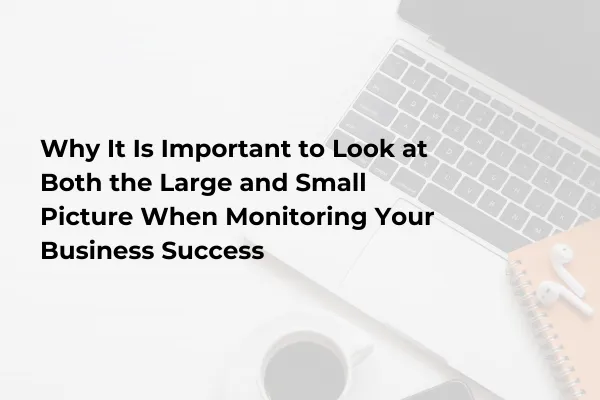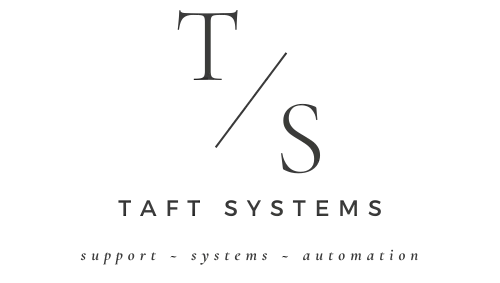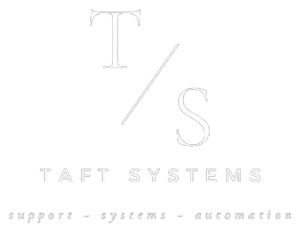
Why It Is Important to Look at Both the Large and Small Picture When Monitoring Your Business Success
When running a business, it’s easy to get caught up in day-to-day operations or focus solely on long-term goals. However, sustainable success requires balancing both perspectives—the large picture (big-picture strategy) and the small picture (the finer details). Monitoring your business success from both angles is crucial for achieving growth, adaptability, and profitability. Here’s why looking at both the macro and micro levels can enhance your business outcomes.
The Large Picture: Strategy and Long-Term Vision
The large picture refers to the broader view of your business—your overall strategy, vision, market positioning, and long-term goals. Keeping this perspective in mind allows you to stay focused on where you want to take your business in the long run.
First things first, you need a well-defined vision and mission to provide a sense of direction. Successful companies don’t just think about where they are now but also where they want to be in 5, 10, or 20 years. Monitoring your progress toward this long-term vision ensures that the decisions you make today align with your business’s future goals.
The large picture also involves analyzing your industry trends, competitive landscape, and market dynamics. By regularly assessing these elements, you can adjust your strategies to remain competitive and innovative.
For instance, Netflix continually adapted its business model—from DVD rentals to streaming, and now to content production—based on market trends. This broad view allowed Netflix to not only survive but thrive in a highly competitive space. Staying abreast of industry trends is essential for maintaining a competitive edge, as discussed in Harvard Business Review.
The Small Picture: Day-to-Day Operations and Metrics
While the large picture sets your overarching goals, the small picture represents the critical details that contribute to your success. Monitoring the micro-level metrics—such as customer satisfaction, employee performance, and daily financials—helps ensure that everything is running smoothly.
One of the most effective ways to monitor the small picture is by tracking key performance indicators. These metrics give you an immediate sense of how well specific areas of your business are performing. For example, if you run an e-commerce business, monitoring KPIs such as conversion rates, cart abandonment, and customer acquisition costs can provide insight into where improvements are needed.
Monitoring these small-picture metrics ensures that you’re not overlooking critical issues that could affect your bottom line. Tools like Taft Systems offer insights into these micro-level metrics, helping you make data-driven decisions.
Looking at the small picture also means paying attention to the efficiency of daily operations. If processes are inefficient or employees are struggling with bottlenecks, it can lead to larger issues down the road. Regularly reviewing your business processes, technology use, and staff productivity can help identify areas that require improvement. This focus on small operational details helps businesses run more smoothly and efficiently.
Customer feedback is a small-picture detail that can provide big-picture insights. Engaging with customers regularly and acting on their feedback helps improve customer satisfaction and retention, directly impacting your business’s success. Small issues in product quality, service speed, or user experience can lead to significant long-term consequences if not addressed promptly. Collecting customer feedback through surveys, social media, or direct communication can help you identify and resolve issues before they escalate.
The Importance of Balancing Both Perspectives: Aligning Short-Term Actions with Long-Term Goals
One of the key reasons to monitor both the large and small picture is to ensure that your short-term actions align with your long-term goals. For example, investing in new technology might seem like a hefty short-term expense, but if it contributes to long-term growth, it's a valuable investment. Alternately, focusing too much on short-term gains without considering their impact on your long-term strategy can lead to poor decision-making.
Incorporating both perspectives allows you to balance immediate operational needs with strategic initiatives that propel your business forward. Business Insider stresses the importance of aligning short-term tactics with long-term business objectives.
Businesses that regularly shift between long and short term perspectives are better equipped to adapt to changes. Whether it’s a sudden shift in market conditions, changes in customer preferences, or new competitors entering the field, being able to assess both the big picture and the small details allows you to react swiftly and strategically.
Monitoring your business success requires you to look at both the large and small picture. The large picture keeps you focused on your long-term vision, strategy, and market positioning, while the small picture ensures that your day-to-day operations are running efficiently and that you are addressing immediate issues. By balancing these perspectives, you can make more informed decisions, adapt to changes, and ultimately, lead your business to sustained success.
Platforms like Taft Systems allow you to track data over time. So as you set your long term goals, you can actively create new, and keep old short term goals. All from a single login, and a single dashboard. Interested in learning more? Schedule a free discovery call with us today at TaftSystems.com/Discovery-Call
For further reading on balancing business perspectives, check out this Forbes article on strategic thinking














